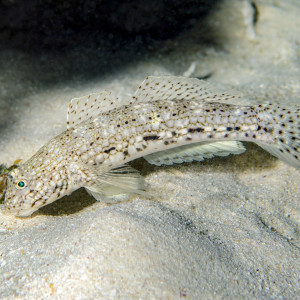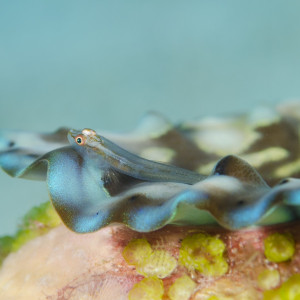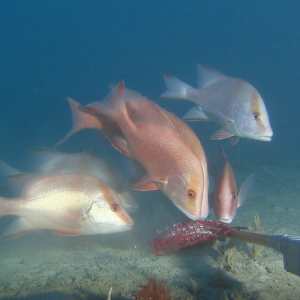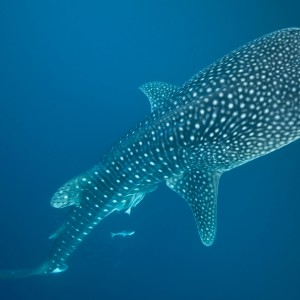Istigobius decoratus, known as the Decorated Sandgoby is found on sand patches near reefs.
 by Ian Shaw
by Ian ShawPleurosicya mossambica also known as the toothy goby or the Mozambique ghost goby is found on many substrates, including corals, sponges, giant clams and seaweeds, and can vary colour according to the substrate.
 by Ian Shaw
by Ian ShawResearchers captured stunning vision and measurements of fish species at the bottom of Ningaloo Reef in Ningaloo Marine Park using a stereo pair of baited remote underwater video systems, also known as ‘BRUVs’.
This whale shark was photographed in the Ningaloo Marine Park off Western Australia. Whale sharks are the worlds biggest fish. The name whale shark arose because they are as big as a whale (recorded up to 18 metres) and also filter feed much like many whales. However, whale sharks breath via gills, and have cartilage instead of bone, which makes them a true shark. The Ningaloo Marine Park is a well known for the whale sharks that visit the region from the months of March to July each year. There is still a lot to learn about whalesharks and where they go when they are not at Ningaloo.
 by Wayne Osborne
by Wayne Osborne



